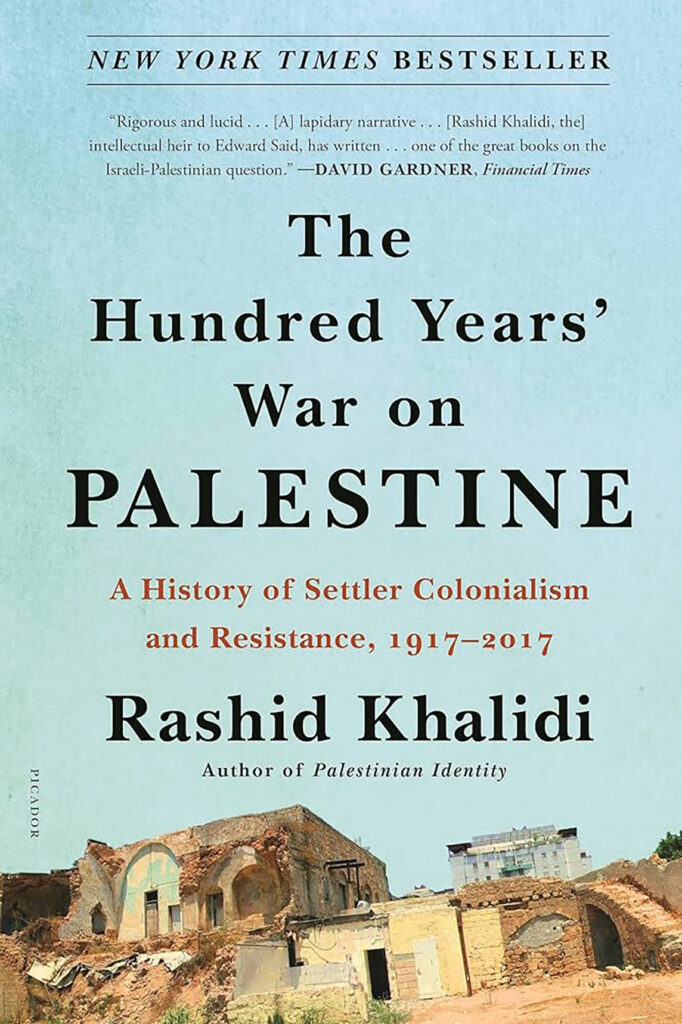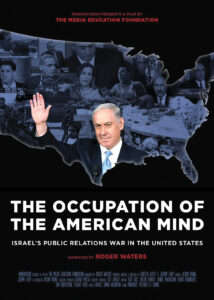Palestine Teaching Resources






Background Book

The Hundred Years’ War on Palestine:
A History of Settler Colonialism and Resistance, 1917–2017
By Rashid Khalidi
(Picador, 2020)
320 pp.
Every teacher hoping to teach about the Israeli-Palestinian conflict should first read Rashid Khalidi’s essential The Hundred Years’ War on Palestine. Khalidi, the Edward Said Professor of Modern Arab Studies at Columbia University, outlines what he sees as the six separate-but-connected wars waged on Palestine between World War I up until shortly before the catastrophe unfolding today. It is scholarly, yet personal, as Khalidi was an eyewitness to a number of these wars. The book begins with Khalidi’s great-great-great-uncle, the Palestinian scholar and Ottoman official Yusuf Diya al-Din Pasha al-Khalidi, who wrote to Theodor Herzl, Zionism’s founding father, in 1899, stressing that Palestine was not an empty land awaiting Zionist settlement: “It is inhabited by others.” He concluded, “In the name of God, let Palestine be left alone.” As Khalidi demonstrates, the heart of today’s conflicts can be traced back to the original Zionist aspiration of “transforming most of an overwhelmingly Arab country into a predominantly Jewish state.” The book’s thesis is that “the modern history of Palestine can best be understood in these terms: as a colonial war waged against the indigenous population, by a variety of parties, to force them to relinquish their homeland to another people against their will.” Khalidi clearly and compellingly brings this story to life.
Novel

Ida in the Middle
Written by Nora Lester Murad
Illustrated by Kate Cosgrove
(Interlink Publishing, 2022)
223 pp.
Middle school student Ida tries to sit where she is “unnoticeable, like the dust on last year’s history books.” She seeks to avoid stereotypical insults hurled at her for being from a Palestinian immigrant family. The school’s silence aggravates the problem. Ida notes, “Nobody even says the word ‘Palestine’ in my school. The teachers are afraid to teach anything about the Middle East, even if the topic has nothing to do with politics.” As the mother of three girls raised in the West Bank and now living in the United States, author Nora Lester Murad is deeply grounded in the book’s characters and themes. And she knows how to captivate middle school readers. Ida eats an olive that sends her time traveling from her home in Massachusetts to her family’s home in the West Bank, introducing readers to both the beauty of their village and the violence of the Israeli occupation that eventually forced her family to leave for their safety. This experience gives Ida the courage and conviction to speak in a school assembly about the realities of the occupation, comparing it to what happened to “Indigenous peoples here. How they were pushed off their land and survived so much violence, as if they weren’t human.” Stepping out of the shadows, she insists that students and teachers see her and her family’s humanity.
Films

Israelism
Directed by Erin Axelman and Sam Eilertsen
(Tikkun Olam Productions, 2023)
israelismfilm.com
84 min.
“Something is deeply wrong here, and it is breaking my heart. What we’ve been told is that the only way that Jews can be safe is if Palestinians are not safe. And I guess the more I learned about that, the more I came to see that as a lie.” Those are the words of Simone Zimmerman, who grew up in Los Angeles, attended Jewish day school, colored Israeli flags, went to Jewish camps, lived in Israel on a high school exchange program, and even spent time acting the role of an Israeli soldier — and then decided to get answers to her questions about the lives of Palestinians. The heart of the wonderful film Israelism is transformation: young Jews fundamentally changing not just their attitudes about Israel, Palestine, and Palestinians, but about their own role in the world — coming to see themselves as solidarity activists. The filmmakers begin by introducing us to a host of pro-Israel proponents and their arguments: Israel is the place you can go to be safe; Israel is the insurance policy; I cannot separate Judaism and Israel — that is my identity; it’s cool to be an Israeli soldier. The film unravels these conclusions and attitudes through the stories of U.S. Jews whose experiences contradict conventional pro-Israeli positions. At almost an hour and a half, Israelism is long, but because it is poignant and filled with point-counterpoint storytelling, it makes for a student-friendly film.

The Occupation of the American Mind:
Israel’s Public Relations War in the United States
Directed by Loretta Alper and Jeremy Earp
(Media Education Foundation, 2016)
occupationmovie.org
(Three versions: 21 min./45 min./84 min.)
Here is Israeli Prime Minister Benjamin Netanyahu, depicted in The Occupation of the American Mind: “I think Americans largely get it. They know who the good guys are and who the bad guys are.” The film’s premise is that U.S. attitudes about Palestine and Israel have been shaped by a decades-long propaganda campaign that has framed Israel as the victim, the aggrieved — the good guys — and the Palestinians as terrorists, “irrational Muslim fanatics” — the bad guys. As the film points out, pro-Israeli propaganda in the United States requires widespread amnesia — blotting out the history of early Zionist settlement in a land that at the start of the 20th century was 94 percent Palestinian Arab; the 1948 ethnic cleansing of more than 700,000 Palestinians; the 1967 occupation of East Jerusalem, the West Bank, and Gaza; Israel’s 1982 invasion of Lebanon; and more. Israeli propaganda erases history, and it erases land — as the conflict in Palestine-Israel has always been centered on who will control the land. The Occupation of the American Mind helps students recognize how, in the words of Sut Jhally, executive director of the Media Education Foundation, the media and politicians consistently frame “Palestinian resistance as terrorism and Israeli aggression as self-defense.” (Helpfully, the filmmakers make available a transcript of the full film: mediaed.org/transcripts/The-Occupation-Of-The-American-Mind-Transcript.pdf.)
Websites

Visualizing Palestine
visualizingpalestine.org
(2024, updated regularly)
Visualizing Palestine is a nonprofit “dedicated to using data and research to visually communicate Palestinian experiences to provoke narrative change.” The graphic storytelling at Visualizing Palestine can help students “see” Palestinian reality in new ways, but also prompt students’ own imaginative visual projects to story Palestine. For example, one January 2024 illustration depicts school buses lined up into the distance: “It would take 177 buses* to carry the Palestinian children killed by Israeli forces in Gaza. (*72 children per bus.)” Another illustration depicts the disparity in water usage for cooking, hydration, and hygiene: Israel — 230 liters per person/per day; World Health Organization minimum per person/per day — 100 liters; Gaza, before the war per person/per day — 88; Gaza today — 3 liters per person/per day. Share these and others at the site with students and have them develop their own.

Pali Answers
PaliAnswers.com
2024
Teachers are called upon to be instant experts about the latest world crisis. And usually, we are not. Some of us have studied Palestine-Israel for years, yet some of us have only recently had our hearts touched by what we see in the media, and have committed ourselves to learn more as we teach our students. Needless to say, widespread misinformation — even lies — infect the discourse about the conflict in Gaza and the Occupied Territories, and Israel, so knowing what is true can be a challenge. Pali Answers is a new crowdsourced still-in-process database of short responses designed explicitly to help people contend with anti-Palestine myths. For example: “It all started on Oct. 7.” Response: “This kind of historical amnesia and dishonest selective historiography enables Israel to keep breaking international law with impunity. As the U.N. secretary-general said, ‘It is important to recognize the attack by Hamas did not happen in a vacuum.’ Palestinians have been subjected to over 100 years of war, displacement, occupation, and discrimination by Israel and her imperial backers.” Myth: “There was no Nakba, it was the Arab armies that attacked Israel in 1948.” Response: “More than 250,000 Palestinians had already been ethnically cleansed out of Palestine before any Arab army had set foot in Palestine. Israel’s ethnic cleansing plan was laid out from the 1930s and carried out starting in 1947. Arab armies at no point aimed to destroy Israel, they tried to maintain as much of the territory as possible and prevent an even larger genocide.” Tough question from a student? Check out PaliAnswers.com.
Newscast

Democracy Now! The War and Peace Report
Hosted by Amy Goodman and Juan González
democracynow.org
Monday – Friday, 60 min.
This is the indispensable newscast. For years, the daily, hour-long Democracy Now! has featured stories about struggles for racial justice, the impact of climate chaos, student activism around the world — and the ongoing crisis in Palestine-Israel. As horrific and hard-to-watch as the daily news can be, Democracy Now! offers a “people’s history” focus on the activists who know how tough things are but keep working to make a difference. Recent segments have featured the poignant, eloquent case brought by South Africa accusing Israel of committing genocide in Gaza; a Chicago ER doctor testifying to the viciousness of Israeli attacks on Gaza hospitals, but also to the heroism of those working to keep people alive in impossible conditions; the Palestinian journalist Akram al-Satarri, on what it means to report the news in the Occupied Territories in “The Struggle to Survive, Stay Sane”; Tal Mitnick, the first Israeli jailed for refusing military service in what he calls the “revenge war” on Gaza; and so much more. Bring to life the insights from the film The Occupation of the American Mind on the manufacture of propaganda, by asking students to compare, say, ABC World News Tonight with Democracy Now! — whose voices matter, whose stories get told, what history is explored?
More Teaching Resources
At our Zinn Education Project — a collaboration of Rethinking Schools and Teaching for Change — we offer a collection of student-friendly resources, including poetry, film recommendations, websites, background articles, and video clips — and lessons and teaching articles, many of which began in the pages of Rethinking Schools. One new lesson featured is the mystery/mixer activity “Teaching the Seeds of Violence in Palestine-Israel,” about the deep roots of the current crisis, described in “No, Anti-Zionism Is Not Antisemitism,” on p. 8 of this issue. Other classroom-tested lessons included are “Independence or Catastrophe? Teaching Palestine Through Multiple Perspectives,” “Remembering Mahmoud Darwish,” and “A Roadmap to Peace?” — a role play activity on the documentary Promises.

